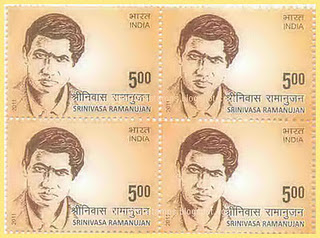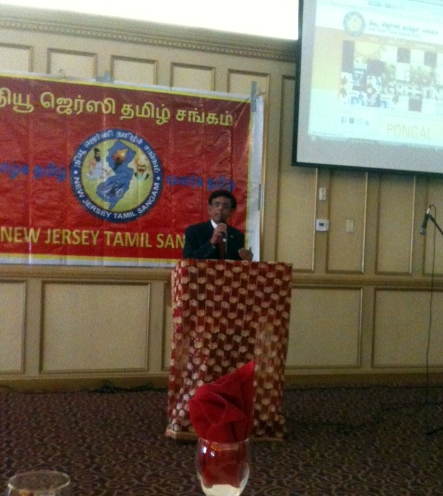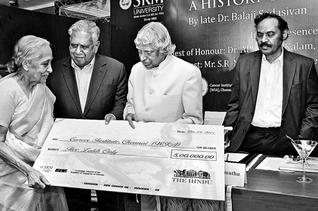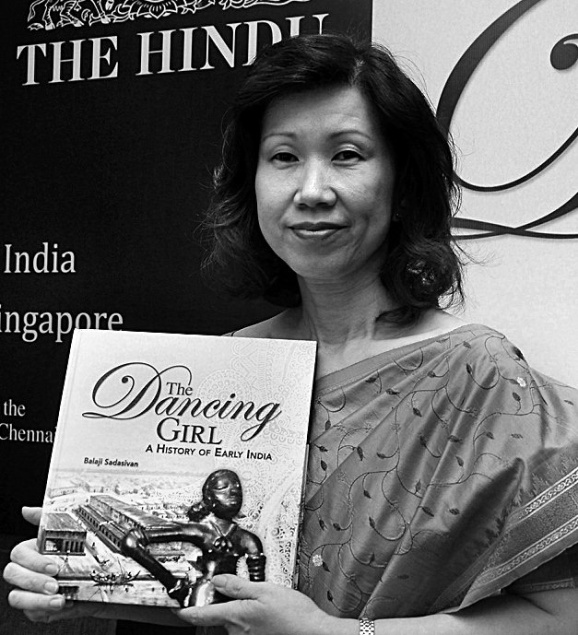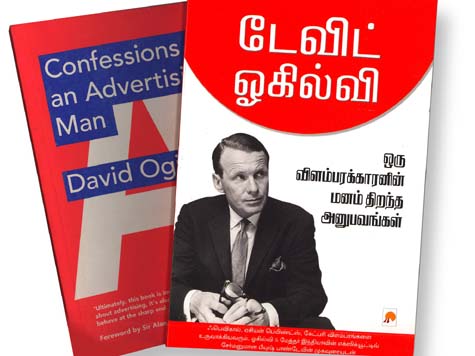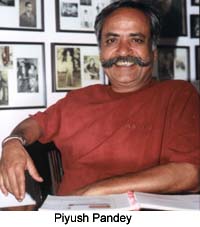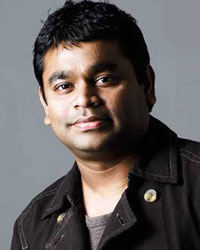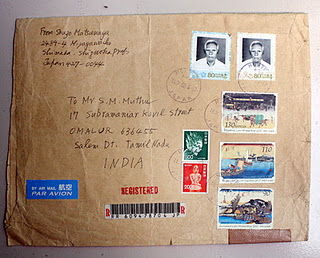Monthly Archives: December 2011
Rep Srinivasan was conferred the Leadership Award for his extraordinary services to the community by the New Jersey Tamil Sangam on Dec 18th, 2011
Speaking on this occasion Rep Srinivasan complimented the community leaders for their efforts to ensure that the next generation and generations to come of Indian Americans are aware of their rich culture and heritage.
He also requested the community leaders to enlarge their scope of services and that at every opportunity make the extra effort to give back to the community here in the United States that has been so generous and kind to each and everyone of us.
“The launching of the website”, said Rep Srinivasan “will definitely enable us to be connected and communicate our mutual interests in culture effectively and efficiently.
source: http://www.RepSrinivasan.com / by CFryx / December 20th, 2011
India’s 22 Million Plus YouTube Sensation – The Kult Of Kolaveri
Website: http://www.youtube.com/watch?v=YR12Z8f1Dh8
Sony Music India has created a viral phenomenon, the likes of which has never been seen before in India, for the cross cultural Tamil-English musical hit Why this Kolaveri Di. Reaching over 20million hits and counting on Youtube, 3.6 million Facebook shares and #Kolaveri hash tag trending on Twitter amongst media, fans, journalists, celebrities and industry barons in just over two short weeks, Why This Kolaveri Di has become an overnight hit that has now crossed over into the international markets.
The video received 83,000 youtube views within 24hours when it was first released to now become the most viewed video on Youtube. Composed by the 21 year old Anirudh, the track is sung by Tamil superstar and now singer Dhanush. Usually used as a popular slang term amongst Tamil youth, the term Kolaveri, meaning ‘murderous rage’, is now being picked up by marketers and brands alike and people in other parts of the work as a form of expression. The track is also the first regional language (Tamil) song ever to see a high rotation on Mainstream Music Channels – play listed on 43 Radio Stations Pan-India and gaining an audience as far afield as Australia and Czechoslovakia.
The simplicity and originality of the viral has also deeply engaged its audience and is the first viral video to be replicated with fans re-creating their own versions of the viral video. Since the video hit youtube just over two weeks ago the number of responses has been steadily growing; even renowned Bollywood playback singer Sonu Nigam’s four year old son has made his own viral which has already notched up over 1 million hits.
“We believed in our creativity and when we sat with the Sony Music team they saw the true potential in it. Our creativity and their vision has led to the song exploding globally. We are proud to be associated with a team and an international brand like them as we see the true value they bring to music”, says Anirudh the 21 year old Music Director.
The video was shot by the Sony Music team and has a raw feel to it, similar to any making-of or unplugged recording. The natural un-staged set-up of the video allows the viewer to connect with the track, creating a deeper level of engagement that sets it apart from other Indian viral videos.
Why This Kolevari Di is a track that is changing the landscape of how music is shared in India. Shridhar Subramaniam, President India and Middle East Sony Music Entertainment and the mind behind creating the viral rage adds “There is a change in the music landscape that we all are witnessing today. Regional Music has huge acceptability- growing at the rate of 20% per annum and regional advertisements are becoming national and today the success of our song ‘Why this Kolaveri Di’ is an endorsement to this phenomena. We have been a part of the change since 2008 when we entered the Tamil Music market and today enjoy a 60% market share. Our outlook and strategy has been to expand in this market and our recent foray in the Punjabi Music Market is another such step.”
“Now, it has been our conscious effort to long tail ‘Why this Kolaveri Di’ concept by creating official dance mixes of the song, exploiting publishing and distributing the same. We want to keep it fresh, buzzing and alive till each person world over has seen/heard it.”
Planned as part of the soundtrack for forthcoming film “3” and gaining more hits each hour, Why This Kolevari Di has signalled a new era in Indian music and that is bridging the gaps between regional and international musical differences.
Why this Kolevari Di is available to download on ITunes.
source: http://www.mi2n.com/ Music Industry News Network / December 18th, 2011
Let’s build on Mauryan inspiration, says Kalam
“Chandragupta built an empire based on a strong central government and a large, powerful army. Ours is akin to it.”
That modern India has been inspired by the Mauryan concepts of statecraft and governance is one of the significant insights provided in “The Dancing Girl: A History of Early India,” by Balaji Sadasivan (1955-2010), a neurosurgeon and Singapore’s former Senior Minister of State for Foreign Affairs.
“The Dancing Girl: A History of Early India,” a book by Balaji Sadasivan, former Singapore Minister, was released at a function organised by The Hindu and SRM University in Chennai on Wednesday. On the occasion, the former President, A.P.J. Abdul Kalam, presents a cheque for Rs. 5 lakh to V. Shanta, Chairperson, Adyar Cancer Institute. The former Singapore President, S.R. Nathan (second from left), and SRM University Chancellor T.R. Pachamuthu are in the picture. In the second photograph Ma Swan Hoo, wife of Balaji Sadasivan, displays a copy of the book. At far right, is a section of the audience at the function. Photos S.R. Raghunathan
Capturing this facet of the author’s findings, the former President, A.P.J. Abdul Kalam, who launched the book at a function organised by The Hindu and SRM University here on Wednesday, said Chandragupta Maurya had built an empire based on a strong central government and a large, powerful army. “This model is virtually akin to the model being followed after our Independence.”
Another contribution of the Mauryas during the reign of Asoka, the former President noted, was the provision of moral and ethical dimension. “He defined that the primary purpose of the government was to provide peace, prosperity and welfare to all the citizens. The author rightly brings out that modern India looks to the Mauryan Empire for inspiration and has taken Mauryan Lion as the state emblem.”
Attributing the attainment of Independence to the phase of the freedom struggle which was led by Mahatma Gandhi, Mr. Kalam said people had to cherish and nurture Independence with the ethics and value system of the era of Chandragupta Maurya.
Quoting the author, Mr. Kalam said the Bhakti movement in India developed from Tamil-speaking south to Sanskrit-speaking north. The spiritual development of Hinduism was based on devotional songs, expressing ecstatic love for God. The compositions were mainly in Tamil, though the numbers of popular hymns were in Sanskrit. The Bhakti movement, encompassing Saivites and Vaishnavites, made Hinduism accessible to Indians of all States in both Sanskrit and regional languages, the former President pointed out.
S.R. Nathan, former President of Singapore, who presented copies of the book to donors, said it was labour of love written by an author who was captivated by the history of his ancestral homeland.
Pointing out that the rise of South Asia, like East Asia, was a civilisational one — though attention has been focussed on the economic potential — and the history of civilisations provided profound insights into their contemporary standing and the possible road ahead, Mr. Nathan said that from this perspective, the book offers much not only for the Diaspora but also for those who are in India itself.
Ma
Ma Swan Hoo, wife of Balaji Sadasivan, who accompanied him on numerous visits to historic sites across India, provided the rationale for naming the book ‘The Dancing Girl’, which refers to a bronze statuette excavated from Mohenjodaro and a showpiece in the National Museum in Delhi. This 10.8-cm statue, a symbol of an advanced civilisation that existed about 4,500 years ago, was important to the history of India, she said.
Balaji Sadasivan, whose roots were in Arcot of Tamil Nadu, was a great lover of the history and civilisation of many countries. He chose to write on the history of India, a country he was so much in love with. He had originally planned to cover the history from ancient times to the present period over five volumes. This book is a combination of the first two volumes of 30 chapters and covers the ancient period up to the start of the decline of the Mughal reign in the 17 {+t} {+h} century.
Addressing the gathering, N. Ram, Editor-in-Chief of The Hindu , praised Balaji Sadasivan’s approach to history, and said the author regarded himself as an amateur but he was a gifted amateur. He instinctively realised that history was not an “unending catalogue of dull facts.”
By reading “The Dancing Girl,” one could learn a good deal about the mind and interests of the neurosurgeon and professional politician-turned historian. “He selects; draws out facts of significance, ignoring the dross and the trivial, and invests them with meaning. He provides interpretation. All interpretation is disputable but the historian must venture out to recreate, even trans-create, the historical picture. This is what this gifted amateur does in an engaging, accessible, enjoyable manner,” Mr. Ram added.
He appealed to Mr. Kalam to provide a push and use his moral influence for the Nalanda University revival project as there were reports of slow release of funds by the Union government to the project although the Bihar government had been very supportive.
Dr. V. Shanta, Chairperson, Adyar Cancer Institute, received a cheque for Rs. 5 lakh for the Institute from Mr. Kalam and Mr. Nathan. K. Kesavapany, Singapore’s Ambassador to Jordan and Director, Institute of Southeast Asian Studies, and T. R. Pachamuthu, SRM University Chancellor, spoke.
source: http://www.TheHindu.com / National / by Special Correspondent / Chennai, December 15th, 2011
Habitat Forum Berlin, Anna University architecture contest for MRTS Light House station
Whether or not the Southern Railway and the Tamil Nadu Government (through the CMDA) care to make the best use of the MRTS system, there is great interest in it elsewhere.
The Habitat Forum Berlin, School of Architecture and Planning, Anna University and City Connect, an NGO in Chennai have jointly announced a contest for architecture students to submit ideas for the Light House Station on the MRTS.
This neglected station suffers from poor maintenance, although it is close to several educational instutions, the Marina Beach, and shopping malls such as Chennai City Centre. What is more, it is ideal transit point as it is cheek-by-jowl with Dr. RK Salai. MTC in fact operated some services via this station to achieve inter-modal connectivity when the system was extended to Velachery, but quickly discontinued them.
It would be interesting to see how architects view the problem, and what their ideas are.
source: http://www.straphanger.wordpress.com / December 13th, 2011
Giving a leg-up to folk performances
Vellore:
Cultural programmes will take place district-wise henceforth, according to executive member of the Tamil Nadu Iyal, Isai and Naadaga Mandram, actress Chachu. Chachu earlier distributed awards to 35 artistes and musicians, sponsored by the Department of Culture and Arts, at Anna Kalaiarangam, on Sunday.
Speaking on the sidelines of the programme, she pointed out that , “A mega dance fest had taken place in Chennai from October 28 to November 9. Similarly, cultural programmes would be held in all districts.
Folk artistes would be given preference in these programmes,” she informed About the programme, Chachu said the fest would start in Tiruchy and move on to Srirangam, Vellore, Tiruvannamalai and other districts.
Chachu distributed prizes to winners of the cultural programmes conducted by Jawahar Siruvar Mandram, identity cards to 1,300 folk artistes, and welfare measures to other artistes.
Vellore district Collector S Nagarajan, Health Ministers Dr V S Vijay, Mohammed John, Vellore Corporation Mayor Karthiyayini, deputy mayor Dharmalingam, deputy director of arts and culture department were also present on the occasion.
source: http://www.ibnlive.in.com / Express News Service, The New / Indian Express/ Home> South> TamilNadu / posted: December 19th, 2011
From Kolaveri country – David Ogilvy’s ‘Confessions’ now in Tamil
Piyush Pandey says the book should inspire a lot of creative people and also clients who stand to benefit from it. It will be produced in other Indian languages too
What’s uncool in Tamil Nadu? Eating with fork and spoon? English caller tunes? Being Tamil and not speaking Tamil? Or speaking only English? In fact, any Chennai-ite who speaks English – especially proper English – runs the risk of being labled ‘Peter’ – disparaging Tamlish for an English-speaking alien.
Wait a minute. Isn’t TN the most urbanised state in India with over 80 per cent literacy? It has the highest number of business enterprises and is home to automobile giants like Ashok Leyland, Ford, BMW, Hyundai. Chennai is the retail industry’s showcase city and an IT hub. And the locals don’t speak English?
No they don’t, says the Tamilian, in his careless Kolaveri accent, so what?
His legendary acumen in Maths/Engineering/Medicine now comes with a feisty pride in his identity. After all, the Chinese speak Chinese and the Germans speak German and the French speak French, so where is it written that Tamils – or for that matter all Indians – need to speak English to be successful?
That is why increasingly the Tamilian, lightyears away from the old derided Madrasi, is turning to the local language as the language of choice, and more significantly, the language of business.
And that is why Dakshin, Ogilvy and Mather’s specialist division to address southern consumers in their own idiom, decided to produce aTamil translation of David Ogilvy’s ‘Confessions of an Advertising Man’. This timeless classic, as much a textbook on advertising as a riveting read, has been published in 14 languages worldwide. Tamil is a first for India. And it’s been released in David Ogilvy’s centenary year.
The book has been produced by the well-known southern publishing house, New Horizon Media, much admired for its “Kizhakku” imprint (get your tongue around the ‘zh’, should be easy after hearing every TV anchor talk about Kanimozhi 24×7/365).
Said Piyush Pandey, Executive Chairman and Creative Director, South Asia, Ogilvy & Mather India, in his foreword: “Confessions of an Advertising Man has been my advertising Bible, Ramayan and Koran for the last 30 years. I am delighted that it’s now been adapted into Tamil. Apart from being a great guide on timeless advertising principles, the book has a lot of lessons for life in general.”
About Ogilvy, Pandey has written: “David Ogilvy was not just a creative genius, but an astute businessman who understood his clients’ products and the minds and hearts of consumers. He was a great friend of Ogilvy India which has embraced and practised his principles through the decades and continues to do so. I am sure this book will inspire a lot of creative people and advertising people from other disciplines, along with numerous clients who stand to benefit from it.”
And after Tamil, O&M plans to produce translations in other Indian languages.
So, Ogilvyikku O-podu! (Go figure). Info@BestMediaInfo.com
source: http://www.BestMediaInfo.com / Home> MediaInfo> Advertising/ BestMediaInfo Bureau / Delhi / December 23rd, 2011
Rahman composes for Spielberg’s next
A couple of days after launching the music of Ek Deewana Tha at the Taj Mahal, music maestro AR Rahman confirms his next big collaboration. He has teamed up with top screenwriter Alex Kurtzman and acclaimed Hollywood producer-director Steven Spielberg for the former’s directorial debut, Welcome To People (WTP)
Kurtzman has earlier been involved with big projects like Mission: Impossible III (2006), Transformers, Star Trek and Cowboys & Aliens among others. He has written the screenplay of this new film with regular collaborators Roberto Orci and Jody Lambert.
“Yes, I have just finished the soundtrack for WTP,” confirms Rahman. “It was great to work with Kurtzman, who is a top screenwriter in Hollywood, and have Spielberg backing it. I really had a great experience working on the film.”
Three years ago, Rahman had created history by winning multiple Oscar awards – among other illustrious trophies – for his super-successful soundtrack in Danny Boyle’s Slumdog Millionaire.
After the film’s success, Rahman has worked on Hollywood projects like Couples Retreat (CR, 2009) and Boyle’s 127 Hours without much success, but he’s excited about the new “soundtrack-oriented” film.
 “WTP’s music is a bit different from CR and 127 Hours. It’s much more emotional and dramatised. I have really enjoyed the process. I think it’s going to release early next year,” explains Rahman, adding that he is trying very hard to divide his time between family, Hindi films, Hollywood, Tamil cinema and other things.
“WTP’s music is a bit different from CR and 127 Hours. It’s much more emotional and dramatised. I have really enjoyed the process. I think it’s going to release early next year,” explains Rahman, adding that he is trying very hard to divide his time between family, Hindi films, Hollywood, Tamil cinema and other things.
“People must understand that now, due to time constraints, things can’t be like they were earlier. And since I am doing very few films, I want to do them satisfactorily with no deadline pressure,” says the maestro.
Interestingly, some time ago, Spielberg had stated that he wanted to work with Rahman. “I have heard interesting compositions of Rahman and would love to work with him in the near future,” the iconic filmmaker had said.
WTP stars Olivia Wilde, Elizabeth Banks, Michelle Pfeiffer, Chris Pine and Mark Duplass. The story is about a man who is tasked with delivering $1,50,000 of his deceased father’s fortune to a sister he has never met.
source: http://www.HindustanTimes.com / Entertainment / by Prashant Singh / Mumbai, December 24th, 2011
Japanese Government released a postal stamp on Muthuji from Salem – Why?
Bharadwaj, a youth from Kanchipuram, Tamilnadu went to Japan in the 10th century (736 AD). To the Japanese he was ‘Baramon’. He taught them Buddhism, Ramayana, Sanskrit, Dharma, Hindu Philosophy and gave them culture, art and music. Today everything with which the Japanese rightly feel proud of as their ancient heritage and culture was given to them by this monk. The Japanese have three scripts – one of them based on Tamil and Sanskrit. That was given by “Baramon Bharadwaj”.
A Japanese delegate Shri Shuzo Matsunoga participated in the Fifth World Tamil Conference held at Thanjavur in 1981 (30 years ago). He presented a paper on ‘Thirukural & Thiruvalluvar in the eyes of Japan’. Muthu, now 91years young, of Omalur off Salem, Tamilnadu came in contact with Sri Shuzo Matsunoga after the Conference. They discussed at length the Tamil culture and literature. Shuzo translated the English version of G U Pope’s Thirukuraal (aphorisms) as guided by Muthu Ji. Shuzo also translated various books of Subramania Bharathi (Kuil Paatu), Naaladiar, Vallalarr poems, Manimegalai and Silapathigaram into Japanese language. Shuzo not only translated the literature but also the culture/rituals of tamils from birth to death, which was greatly relished by the Japanese. Shuzo also bagged a prize for translation of tamil work in 1985 organized by University of Tanjore who also authors a book “My India as seen through letters”.
 Now, the Government of Japan has included this Thirukural as a lesson in the text book at college level. To cap it all, when the Japanese Government proposed to release a postal stamp to honour Shuzo Matsunoga for his works, he humbly refused and said, “To translate this tamil literature into Japanese language, Muthu from Salem has helped me. So the credit goes to him”. On his recommendation the Japanese Government released a postal stamp on Muthu (Salem) for 80 Yen (Rs.27/-) in 2007. Muthu, a humble and noble person, did nothing for selfish end. It was all for the tamil literature. He communicated all this over to his friend in Japan only through 200 letters, while, in the Facebook age, individuals transmit info electronically.
Now, the Government of Japan has included this Thirukural as a lesson in the text book at college level. To cap it all, when the Japanese Government proposed to release a postal stamp to honour Shuzo Matsunoga for his works, he humbly refused and said, “To translate this tamil literature into Japanese language, Muthu from Salem has helped me. So the credit goes to him”. On his recommendation the Japanese Government released a postal stamp on Muthu (Salem) for 80 Yen (Rs.27/-) in 2007. Muthu, a humble and noble person, did nothing for selfish end. It was all for the tamil literature. He communicated all this over to his friend in Japan only through 200 letters, while, in the Facebook age, individuals transmit info electronically.
Shri Ravikumar of Vishwa Vibhag during his tour of Tamilnadu, met Muthu Ji. He was received well. Muthu ji lauded RSS for its social service and patriotic fervor.
source: http://www.haindavakeralam.com / courtesy: VSK Chennai / December 27th, 2011
